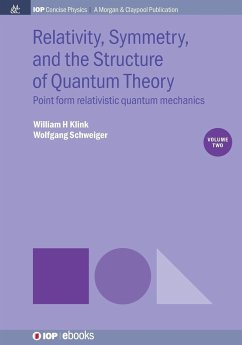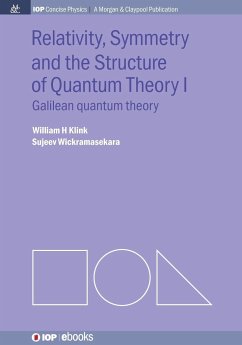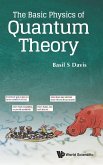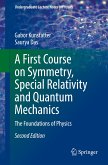The first version of quantum theory, developed in the mid 1920's, is what is called nonrelativistic quantum theory; it is based on a form of relativity which, in a previous volume, was called Newton relativity. But quickly after this first development, it was realized that, in order to account for high energy phenomena such as particle creation, it was necessary to develop a quantum theory based on Einstein relativity. This in turn led to the development of relativistic quantum field theory, which is an intrinsically many-body theory. But this is not the only possibility for a relativistic quantum theory. In this book we take the point of view of a particle theory, based on the irreducible representations of the Poincare group, the group that expresses the symmetry of Einstein relativity. There are several ways of formulating such a theory; we develop what is called relativistic point form quantum mechanics, which, unlike quantum field theory, deals with a fixed number of particles in a relativistically invariant way. A central issue in any relativistic quantum theory is how to introduce interactions without spoiling relativistic invariance. We show that interactions can be incorporated in a mass operator, in such a way that relativistic invariance is maintained. Surprisingly for a relativistic theory, such a construction allows for instantaneous interactions; in addition, dynamical particle exchange and particle production can be included in a multichannel formulation of the mass operator. For systems of more than two particles, however, straightforward application of such a construction leads to the undesirable property that clusters of widely separated particles continue to interact with one another, even if the interactions between the individual particles are of short range. A significant part of this volume deals with the solution of this problem. Since relativistic quantum mechanics is not as well-known as relativistic quantum field theory, a chapter is devoted to applications of point form quantum mechanics to nuclear physics; in particular we show how constituent quark models can be used to derive electromagnetic and other properties of hadrons.
Hinweis: Dieser Artikel kann nur an eine deutsche Lieferadresse ausgeliefert werden.
Hinweis: Dieser Artikel kann nur an eine deutsche Lieferadresse ausgeliefert werden.








